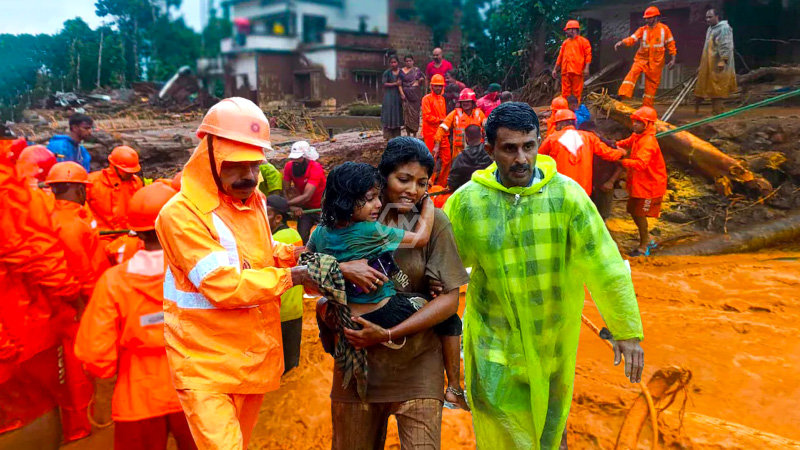- Land Use Changes: Shift from forest cover to plantation crops like rubber trees exacerbates soil erosion and landslides.
- Heavy Rainfall: Continuous intense rainfall saturates soil, increasing the risk of landslides in vulnerable areas.
- Development Impact: Construction activities and lack of environmental protections contribute to the region’s instability.
The recent landslides in Wayanad, Kerala, have been intensified by the transition from dense forest cover to plantation crops. The replacement of native trees with rubber plantations reduces soil stability, making it more prone to erosion and landslides.
This change in land use has compounded the effects of heavy rainfall, which saturated the soil and triggered the landslides.
Wayanad Tragedy: How Deforestation and Development Amplify Landslide Risks
Climate change and erratic monsoon patterns further exacerbate the situation. The increased intensity of rainfall over short periods saturates the soil, making it prone to slipping. Additionally, La Niña conditions in the Pacific contribute to stronger monsoon flows, intensifying the risk of landslides in already vulnerable regions like the Western Ghats.
Human activities such as road construction and quarrying, which disturb the natural hillside stability, have also played a crucial role. These activities weaken the soil structure and contribute to the destabilization of hillsides, making them more susceptible to landslides. Despite past warnings and recommendations for environmental protection, many of these issues remain unaddressed.
To mitigate future risks, it is essential to incorporate sustainable land use practices and robust early warning systems. Monitoring and addressing both natural and human-induced factors can help in managing and reducing the impact of such natural disasters, potentially saving lives and minimizing damage.
Addressing the Wayanad tragedy requires a multifaceted approach that includes both environmental conservation and effective land management. Sustainable development practices and improved disaster preparedness are crucial for reducing the risk of future landslides in vulnerable regions.
“Road projects cutting through hillsides are common… Rock quarries are proliferating along these construction sites to provide construction materials



